Poha refers to flattened rice flakes and vegetable cubes sauteed in ghee, flavored with lemon and spices. The dish cooks up into a tasty breakfast, lunch, dinner, or snack in about 10-15 minutes. It’s that versatile, and that easy!
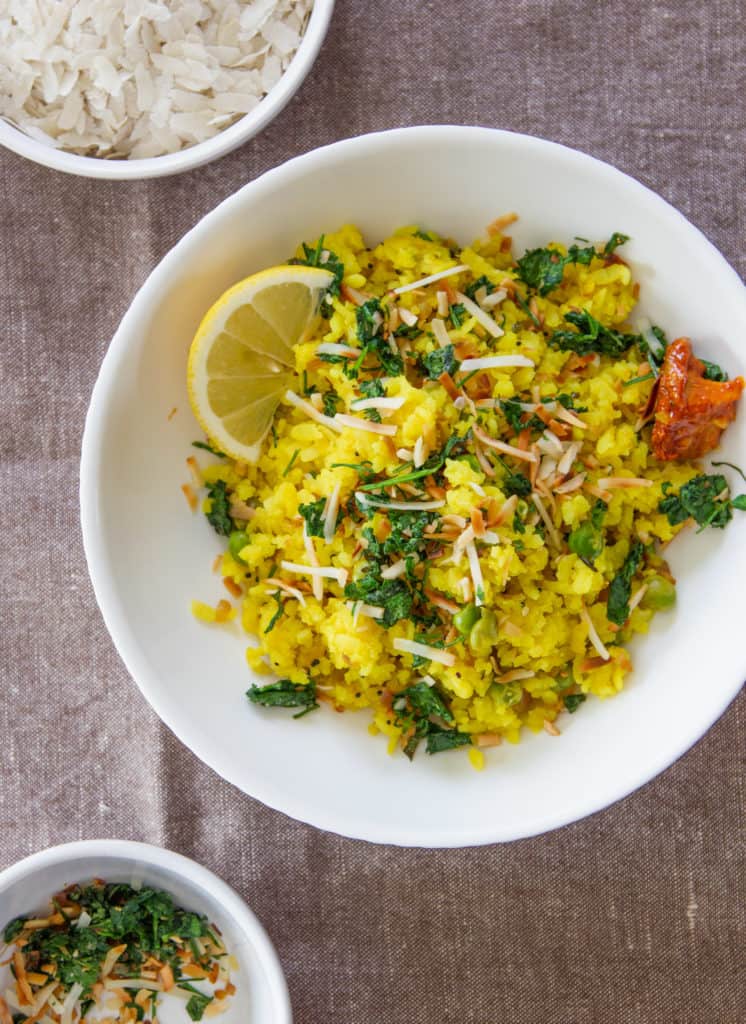
Jump to:
In India, most people enjoy poha for breakfast, and that’s how I like it too.
I make this about once a week, whenever I am craving a savory and energizing breakfast that’s easy to digest.
Poha is easy to digest because rice is easy to digest, particularly one that is already partially cooked and processed into flakes. When you make poha you also steam it, so the texture is soft, yet still a little chewy.
Add vegetables
For more flavor and nutrition, you can add in vegetables to poha. Green peas are the easiest. Peas are also high in vegetarian protein, which helps make the breakfast more satiating.
I'd say that parboiled potato cubes are the next most common, followed by a bit of carrot or green beans.
The great thing about green beans, and asparagus—which I have been known to use—is that when you chop them up finely, they cook quickly, but still add a bit of crunch.
The key when adding vegetables is to ensure they are either precooked (as with potato) or cook quickly.
You add vegetables at the stage just after browning the ginger and adding the spices.
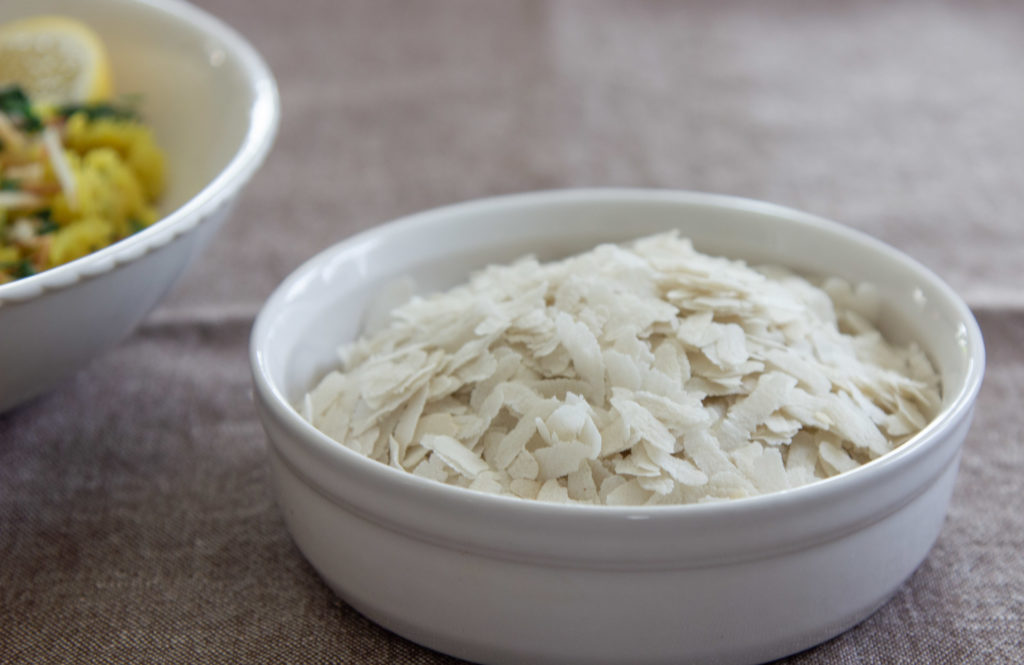
The spices, ghee, and lemon add digestive support and warmth to the dish, making it highly satisfying.
Toppings
The coconut flakes and cilantro topping featured in the photos is optional, but glorious. If you don’t make this topping, you can add a bit of minced cilantro just before serving.
It is also common to top poha with peanuts, cashews, and/or raisins. Peanuts are traditionally used.
To prepare the topping, start half a teaspoon of ghee in a small skillet on medium heat. Add 1-2 tablespoons topping of your choice and stir continuously until just starting to brown.
It is also common in India to have a teaspoon of Indian pickle or chutney with poha.
There are so many chutneys and pickles to choose from at an Indian store, or you can even make one homemade, such as cilantro chutney.
Tomato chutney, lemon pickle, and mango pickle are the most common chutneys you'll find in jars at the Indian stores.
Where to buy poha flakes
Poha isn't available just anywhere. You'll need to buy them at an Indian grocery store or online. Make sure you buy the thick flakes for this dish.
>> You can buy poha with thick flakes HERE.
Poha tips
- I like to place the poha flakes in a colander that fits in a bowl. Then I fill the bowl with water and lift the colander to drain two times. On the third soak, I leave the poha flakes soaking for a few minutes to absorb water, then lift and drain. This way when you add the rinsed and briefly soaked poha to the saucepan, you'll get the perfect texture.
- If you over-soak, or add too much water, you'll end up with mush.
- If your poha is too dry, add a sprinkle of water.
- Another tip is that after you add the poha into the saucepan, turn down the heat to low to prevent burning or sticking.
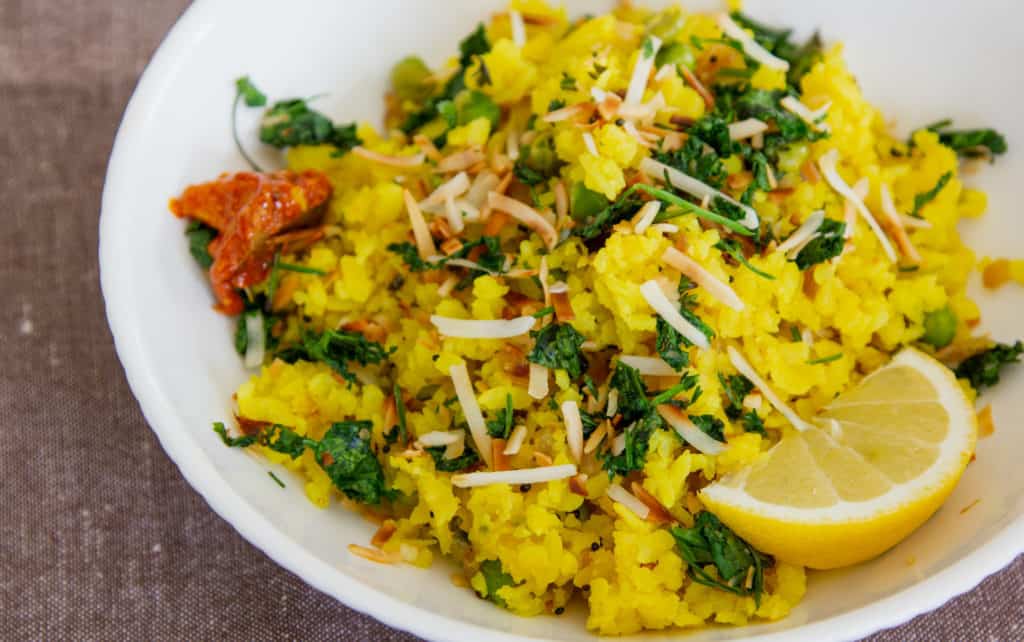
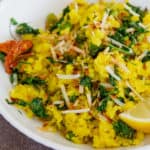
Recipe for Poha Breakfast
Helpful Kitchen Tools:
Ingredients
Prepare the poha
- 3 cups poha (thick flakes)
- ¼ teaspoon turmeric powder
- ¼ teaspoon mineral salt, or to taste
Start the poha
- 2 teaspoons ghee
- ¼ teaspoon black mustard seeds
- pinch asafetida (hing), optional
- 1 teaspoon ginger, finely chopped or grated
- ½ cup frozen peas
- 1 tablespoon water
Finish the poha
- ¼ cup fresh cilantro, chopped
- 1 tablespoon lemon, freshly squeezed
Instructions
Complete the prep for poha
- Remove frozen peas from the freezer and place in a bowl on the counter to defrost. Rinse with cold water if you want to speed up the process. Drain the peas before cooking.
- Place poha flakes in a bowl and cover with cold water. Use your fingers to mix thoroughly and then strain through a sieve. You will notice that the water becomes cloudy with starch. Strain, and rinse a second time, then let the poha soak in water for 2-3 minutes and strain a third time. Sprinkle turmeric and salt over the poha and mix well. Your poha is now ready to use.
- Finely chop your ginger and get out your spices and have them ready by the stove.
Start the poha
- Add ghee to saucepan on medium heat. Add the black mustard seeds and cook until about half the mustard seeds pop. Turn the heat down to low and add the optional asafetida followed by the ginger. Stir frequently, and cook until the ginger is just starting to brown.
- Add the frozen peas along with a pinch of salt and a tablespoon of water. Reduce heat to low, stir, and cover with a lid. Cook, covered, for 5 minutes to cook the peas. (Add any additional vegetables at this stage if using. (SEE NOTES) Check at least once to ensure the dish doesn’t run out of moisture. Add a bit more water if needed.
- Add the prepared poha flakes along with a couple tablespoons of water. Stir well to combine. Cover, and cook on low heat for 3 minutes.
- Turn off the heat and open the lid. Test the poha for moisture. If it’s dry, or sticking to the bottom of the pot, add a bit more water. Getting the moisture right is a trick. You don't want so much that it becomes sticky or gloppy, but it also shouldn't be overly dry. Turn off the heat, cover, and let steam for 3-5 minutes.
Finish and serve
- Add fresh lemon juice and cilantro and stir.
- Serve poha in a bowl, and top with any optional toppings you like (see notes for details). If you have an Indian pickle or mango chutney, have a teaspoon of it with the poha. Enjoy!
Notes
Add vegetables
Turn poha into vegetable poha by including carrots, potatoes, or green beans. You can include any vegetable in poha, as long as it’s fully cooked before you add the soaked poha flakes.Optional toppings
For added flavor, nutrition, and interest, add a topping of coconut flakes, cashews, peanuts, and/or raisins. Peanuts are traditionally used. To prepare the topping, start half a teaspoon of ghee in a small skillet on medium heat. Add 1-2 tablespoons topping of your choice and stir continuously until just starting to brown. It is also common in India to have a teaspoon of Indian pickle or chutney with poha. There are so many chutneys and pickles to choose from at an Indian store, or even homemade. Tomato chutney, lemon pickle, and mango pickle are the most common.Nutrition
If you liked this post, please share it with your friends on social media, or leave a comment below.
For more Buttered Veg lifestyle content, follow me on Pinterest, Facebook, and Instagram.
Other recipes you may like
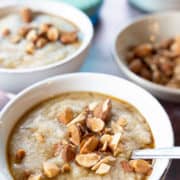



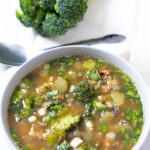
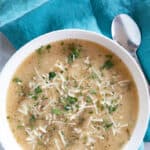
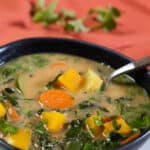
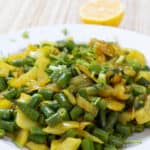

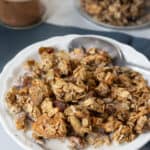
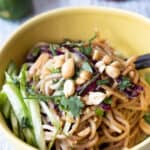

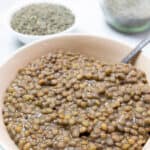
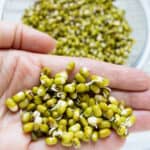
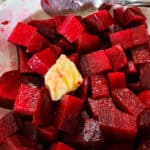

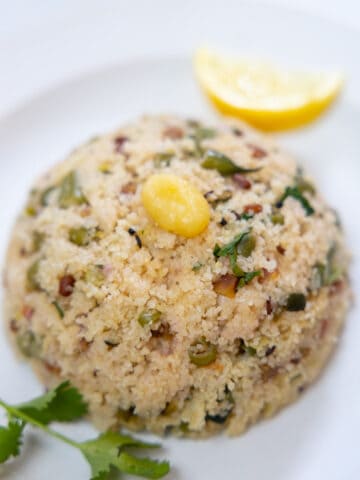
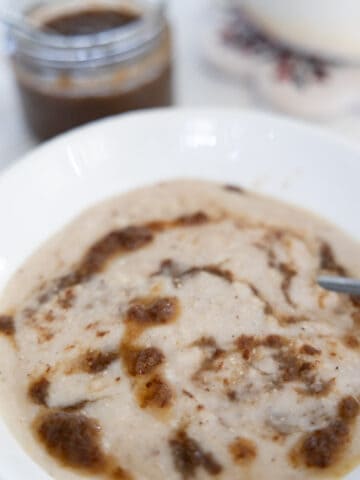
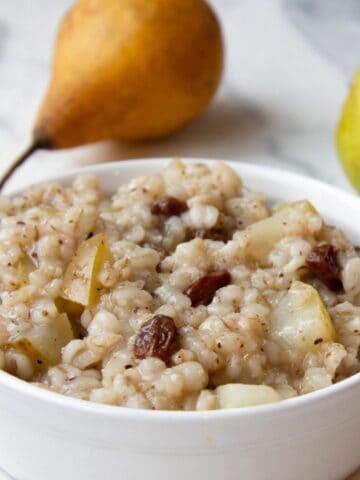
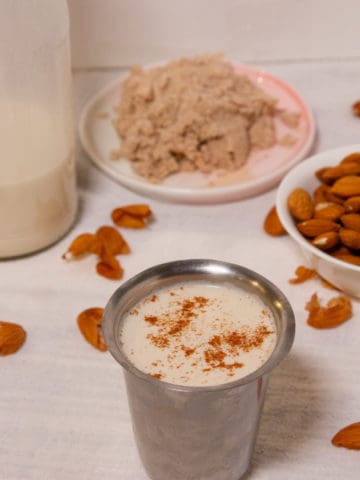
Rupert
Here in the UK I've bought brown/whole grain phoa, the Indian shop keeper was very amused that I was buying it ! So now I've followed your lemon flavoured method & wonderfully described instructions, I'm hooked ! I plan to experiment with other flavours, many thanks !!
Andrea
Hi Rupert,
I've never heard of whole grain poha. How cool is that? So glad that you discovered this dish. We still enjoy it 1-2 times a week at our house. Happy cooking, and much enjoyment to you! —Andrea
Jess
In the description you suggest to “ On the third soak, I leave the poha flakes soaking for a few minutes to absorb water, then lift and drain. ” in the recipe you say to strain but don’t mention soaking. Do you have to soak thick poha? Do you suggest it for this recipe? Can’t wait to try
Andrea
Hi Jess, Thanks so much for the question, and I am excited that you are excited to try. I have clarified the instruction in the recipe. Let me know how it goes! —Andrea
hungryhouse
Poha Breakfast for the best option. it's not only for breakfast it is also for evening snacks. I love phoa I always order from hungryhouse.in but now I can make it at home. Thanks for sharing tips. I am very happy to read your content.